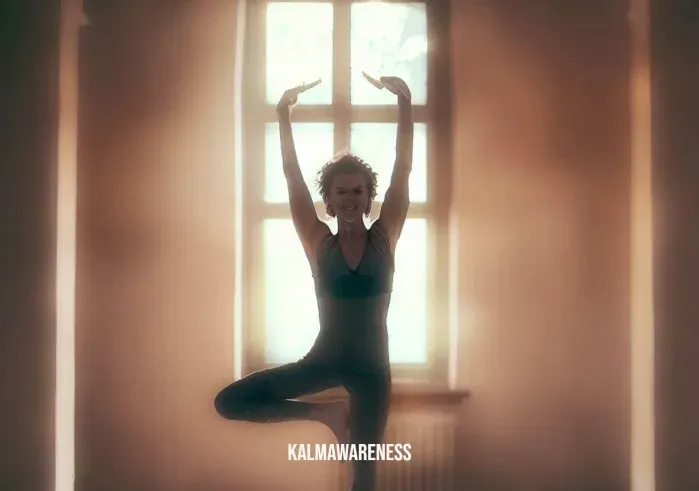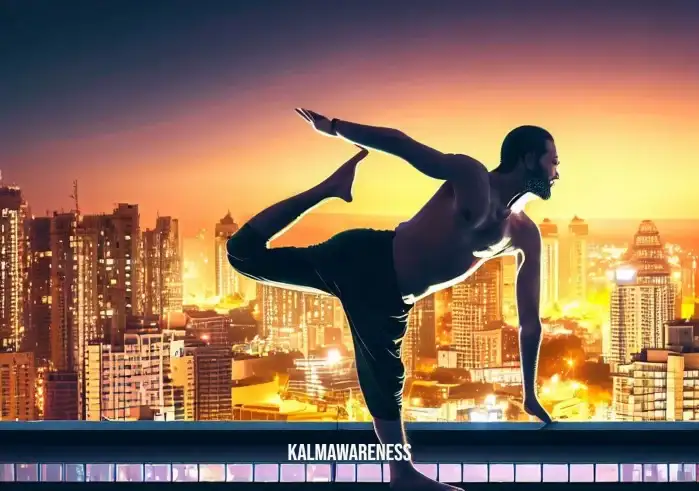Yoga Side Crow Pose: Unleashing Balance and Strength
Description:
In this article, we will explore the invigorating and challenging Yoga Side Crow Pose, a powerful asana that combines balance, strength, and focus. As you delve into the details of this pose, you will discover its benefits, variations, and step-by-step instructions for achieving it. Whether you’re a beginner or an advanced practitioner, Yoga Side Crow Pose offers a unique opportunity to enhance your practice and unlock your inner strength.
Table: Pose Details
| Description | Explanation |
|---|---|
| Pose Name | Yoga Side Crow Pose |
| Original Name | Parsva Bakasana |
| Difficulty Level | Intermediate |
| Pose Category | Arm Balance |
| Exercise Duration | Beginners: 30 seconds <br> Advanced: 1 minute |
✨ Continue reading to learn the step-by-step process of mastering Yoga Side Crow Pose and discover its remarkable benefits. ✨
Benefits of Yoga Side Crow Pose:
Yoga Side Crow Pose offers a multitude of physical, mental, and energetic benefits. Incorporating this pose into your practice can bring about the following advantages:
- Strengthens the Core: Yoga Side Crow Pose targets the core muscles, including the abdominals and obliques, helping to build a strong and stable center.
- Enhances Balance: By engaging the arms and core while balancing on one side of the body, this pose cultivates stability and improves overall balance.
- Builds Arm and Shoulder Strength: The arm and shoulder muscles are actively engaged in supporting the body weight, which helps to increase strength and endurance in these areas.
- Improves Concentration: Yoga Side Crow Pose requires focus and concentration, sharpening your mental faculties and promoting mindfulness.
- Stimulates Digestion: The twist involved in this pose massages the abdominal organs, aiding digestion and promoting a healthy digestive system.
- Boosts Confidence: As you gradually progress in this challenging pose, your confidence and self-esteem soar, reflecting the strength and balance you have developed.
Step-by-Step Guide to Yoga Side Crow Pose:
- Begin in a squatting position with your feet slightly wider than hip-width apart. Bring your palms together at the center of your chest in a prayer position.
- Shift your weight onto your left side and begin to twist your torso to the left, placing your right elbow on the outside of your left thigh.
- Plant your palms shoulder-width apart on the ground, fingers spread wide, and extend both legs straight out behind you.
- Engage your core and slowly start to shift your weight forward onto your hands, lifting your feet off the ground.
- Bend your elbows slightly and shift your weight onto your hands and arms, finding balance on the outside of your left arm.
- Once you feel stable, lift your right foot off the ground and bring your right knee towards your right tricep.
- Gently press your knee into your tricep and engage your core to lift your left foot off the ground, straightening your left leg out in front of you.
- Find your balance and hold the pose, breathing deeply and maintaining focus for the recommended duration.
Remember to repeat the steps on the opposite side to achieve a balanced practice.

Exploring Variations and Benefits of Yoga Side Crow Pose
Benefits of Yoga Side Crow Pose:
As we continue our journey into the captivating world of Yoga Side Crow Pose, let’s explore the numerous benefits it offers. Beyond the physical strength and balance it cultivates, this pose also brings about mental and emotional well-being. Dive deeper into the advantages of this invigorating asana:
- Enhances Upper Body Strength: Yoga Side Crow Pose targets the arms, wrists, and shoulders, strengthening and toning these muscles. With regular practice, you will witness increased upper body strength and stability.
- Improves Core Stability: The engagement of the core muscles is essential for maintaining balance in Yoga Side Crow Pose. As you strengthen your core, you will develop better stability throughout your entire yoga practice.
- Boosts Concentration and Focus: This challenging arm balance requires focus and concentration. By practicing Yoga Side Crow Pose, you cultivate mental clarity, enhancing your ability to stay present on and off the mat.
- Increases Spinal Mobility: The twisting motion involved in this pose stimulates the spine, promoting flexibility and relieving tension. It can be especially beneficial for individuals who spend long hours sitting or have sedentary lifestyles.
- Promotes Detoxification: The twist in Yoga Side Crow Pose aids in the gentle massage of the internal organs, supporting their detoxification process and improving overall digestive health.
- Ignites Inner Fire and Confidence: As you conquer the intricacies of this pose, you tap into your inner strength, igniting a fire of self-confidence and empowerment that transcends your yoga practice and permeates your daily life.
Variations for Different Experience Levels:
Yoga Side Crow Pose offers a range of variations that cater to practitioners of varying experience levels. Whether you’re a beginner or an advanced yogi, there’s a variation that suits your unique journey. Explore the following options and discover the one that resonates with you:
- Supported Side Crow Pose: For beginners or individuals working on building strength and balance, using a block can provide support and stability. Place a block at its highest height under your supporting hand to elevate your body and make the pose more accessible.
- Extended Leg Variation: Once you have established stability in the traditional Side Crow Pose, you can experiment with extending one or both legs straight out while maintaining balance. This variation adds an extra element of challenge and engages additional muscle groups.
- One-Legged Side Crow Pose: For intermediate practitioners, the one-legged variation of Side Crow Pose offers an opportunity to refine balance and core engagement. Lift one leg off the ground, extending it behind you while maintaining the pose on the opposite side.
- Advanced Transitions: Advanced practitioners can explore transitioning into and out of Yoga Side Crow Pose from other arm balances, such as Crane Pose or Firefly Pose. These dynamic transitions require strength, flexibility, and precision, elevating your practice to new heights.
Who Should Avoid Yoga Side Crow Pose:
While Yoga Side Crow Pose offers numerous benefits, it may not be suitable for everyone. It is essential to listen to your body and exercise caution if you fall into any of the following categories:
- Wrist or Shoulder Injuries: Individuals with wrist or shoulder injuries should avoid practicing Yoga Side Crow Pose until they have fully recovered. It is crucial to prioritize your safety and allow your body to heal.
- Pregnancy: Pregnant individuals should refrain from practicing Yoga Side Crow Pose, as it involves twists and balancing on the abdomen, which can be challenging and potentially harmful during pregnancy. Opt for pregnancy-safe yoga poses recommended by a qualified prenatal yoga instructor.
- High Blood Pressure: If you have high blood pressure or any cardiovascular conditions, it is advisable to avoid intense arm balances like Yoga Side Crow Pose. Consult with your healthcare provider for guidance on suitable yoga practices.
Remember, it is always beneficial to practice under the guidance of a qualified yoga teacher, especially when exploring advanced variations or if you have any specific health concerns.

Unveiling the History and Spiritual Significance of Yoga Side Crow Pose
In this enchanting chapter of our yoga odyssey, we delve into the rich history and spiritual essence of Yoga Side Crow Pose. Discover the origins of this empowering pose, explore its deeper meaning, and gain insights into optimizing your practice. Additionally, we will explore modifications for practitioners with specific needs and explore complementary poses that enhance the benefits of Yoga Side Crow Pose.
The History of Yoga Side Crow Pose:
Yoga Side Crow Pose, also known as Parsva Bakasana, finds its roots in the ancient practice of yoga. The term “Parsva” translates to “side,” while “Bakasana” refers to “Crane Pose.” This pose has been passed down through generations of yogis, evolving and adapting over time.
The influence of traditional Hatha Yoga, dating back thousands of years, can be traced to the development of arm balances like Yoga Side Crow Pose. The ancient yogis discovered that balancing on the arms not only strengthened the body but also cultivated mental focus and spiritual connection.
The Spiritual Significance of Yoga Side Crow Pose:
Beyond its physical benefits, Yoga Side Crow Pose holds spiritual symbolism and significance. The combination of balance, strength, and concentration in this pose represents the integration of opposites and the unity of mind, body, and spirit. It is believed that by practicing this pose, one can attain a sense of harmony within oneself and with the universe.
Yoga Side Crow Pose activates the Manipura Chakra, the energy center located in the solar plexus region. This chakra is associated with personal power, confidence, and transformation. As you navigate the challenges and find balance in this pose, you tap into your inner strength and ignite the fire of transformation within.
Tips for Maximizing Your Yoga Side Crow Pose Practice:
To optimize your experience and reap the full benefits of Yoga Side Crow Pose, consider the following tips:
- Warm-Up: Prioritize a thorough warm-up before attempting this challenging pose. Engage in dynamic movements, such as Sun Salutations, to awaken the body and prepare the muscles for the demands of arm balances.
- Core Engagement: Activate your core muscles by drawing your navel toward your spine. This engagement creates a solid foundation and helps to stabilize the pose.
- Gaze Point: Maintain a soft gaze on a fixed point on the ground slightly ahead of you. Focusing your eyes enhances your balance and concentration.
- Breathing Awareness: Pay attention to your breath throughout the pose. Practice deep, steady breathing, allowing the breath to flow smoothly, aiding in relaxation and focus.
- Gradual Progression: If you’re new to Yoga Side Crow Pose, start with the supported variation or work on building your arm and core strength with preparatory poses. Gradually progress as your body becomes more accustomed to the demands of the pose.
Common Mistakes to Avoid:
While practicing Yoga Side Crow Pose, be mindful of the following common mistakes to ensure a safe and effective practice:
- Collapsing the Chest: Avoid allowing the chest to sink towards the ground. Instead, focus on lifting through the chest and maintaining a strong, elongated spine.
- Placing Too Much Weight on the Arms: Distribute your body weight evenly between your hands and arms, avoiding excessive pressure on the wrists.
- Lack of Core Engagement: Remember to engage your core muscles throughout the pose. A strong core provides stability and support.
- Forcing the Pose: Listen to your body and respect its limits. Avoid pushing beyond your comfort zone and strive for gradual progress rather than forcing the pose.
Modifications for Injuries or Limited Flexibility:
Yoga Side Crow Pose can be modified to accommodate individuals with injuries or limited flexibility. Here are a few variations and modifications:
- Using Blocks: Place blocks under your hands to decrease the distance between the ground and your body, providing additional support.
- Using a Wall: Position yourself near a wall for added stability. Place your feet against the wall while practicing the pose to prevent slipping.
- Bent Knee Variation: If straightening the legs is challenging, try keeping one or both knees bent. This modification reduces strain on the hamstrings and makes the pose more accessible.
Complementary Poses:
To enhance your experience and deepen the benefits of Yoga Side Crow Pose, incorporate the following complementary poses into your practice:
- Crow Pose (Bakasana): Mastering Crow Pose can help you develop the necessary arm and core strength to progress into Yoga Side Crow Pose.
- Twisting Poses: Poses like Revolved Triangle (Parivrtta Trikonasana) and Revolved Chair Pose (Parivrtta Utkatasana) prepare the body for the twisting motion involved in Yoga Side Crow Pose.
- Core-Strengthening Poses: Practicing core-strengthening poses like Plank Pose (Phalakasana) and Boat Pose (Navasana) helps build the necessary stability and engagement for Yoga Side Crow Pose.




